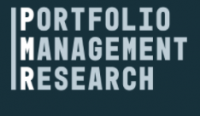The Savvy Investor Stock Selection and Analysis topic is very much at the heart of investment research and academic journal entries.
Onsite, this section stands alone to the asset allocation and strategy selection but delves into the very essence of analysis and choice. Stock selection: Value vs. growth. Active vs. passive. Analysis: Management appraisal, performance review, valuation techniques, factor investing. The articles and white papers here relate to the theory and process of stock selection, and corporate analysis for equity investing...
.
Stock selection is an active portfolio management technique which focuses on the merits of a particular stock rather than wide-ranging allocation alternatives. Value, quality, momentum, size, and low volatility all become relevant factors, along with alternative fundamental analysis. Nearly all investors will utilise this technique, but for different reasons. The application for income-orientated investors will focus on the purchase (and retention) of shares in entities that pay an attractive level of dividend regularly, such as utility companies; solid but low-growth. Alternative instruments can be in the form of bonds, real assets, real estate investment trusts (REITs) and limited partnerships.
Wealth-orientated investors seeking wealth preservation have a reduced risk appetite, leading to preferred investments in stable blue-chip companies. This is typically a consumer staple provider, excluding initial public offering (IPO) opportunities.
Capital appreciation-orientated investors are seeking maximum growth in a company’s early years. For this to happen, they must take on a higher level of risk, as newer businesses are more susceptible to failure during the start-up and early growth phase.
Stock selection methods may underpin certain analytical models. Business valuations comprise discounted cashflow analysis (DCF), comparable company analysis, and precedent transactions. Investment and financial ratio analysis is typically used to assess the financial health of a company as well as a company’s value.
Stock selection and analysis pertain to:
- Fundamental analysis
- Qualitative analysis
- Value investing
- Growth investing
- Factor investing
- GARP investing
- Income investing
- CANSLIM
- Dogs of the Dow
- Technical analysis















